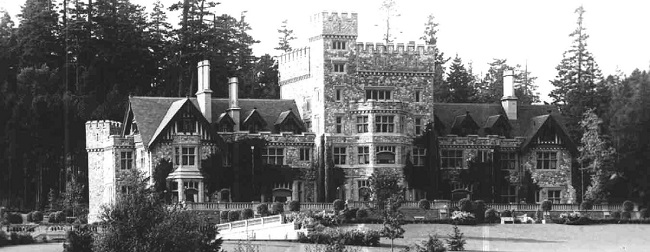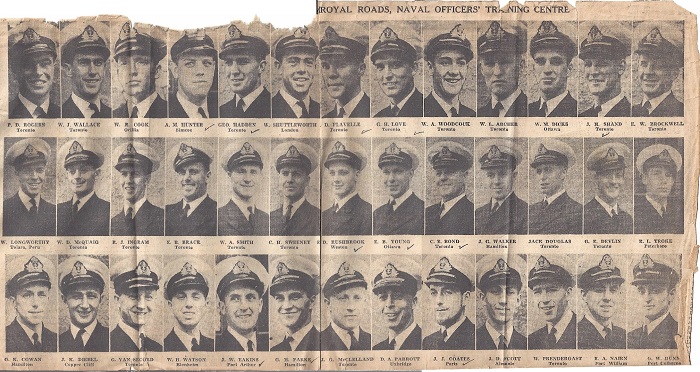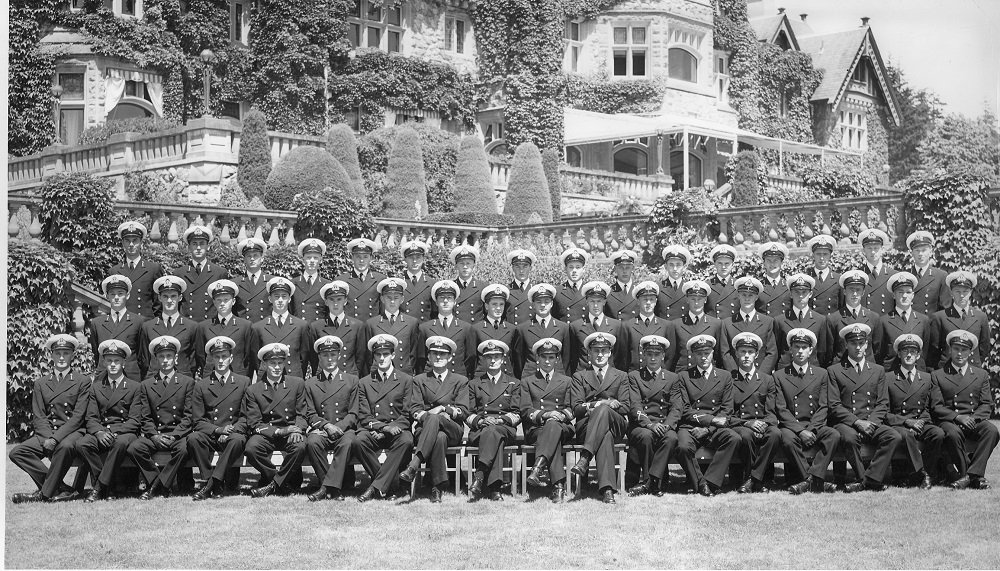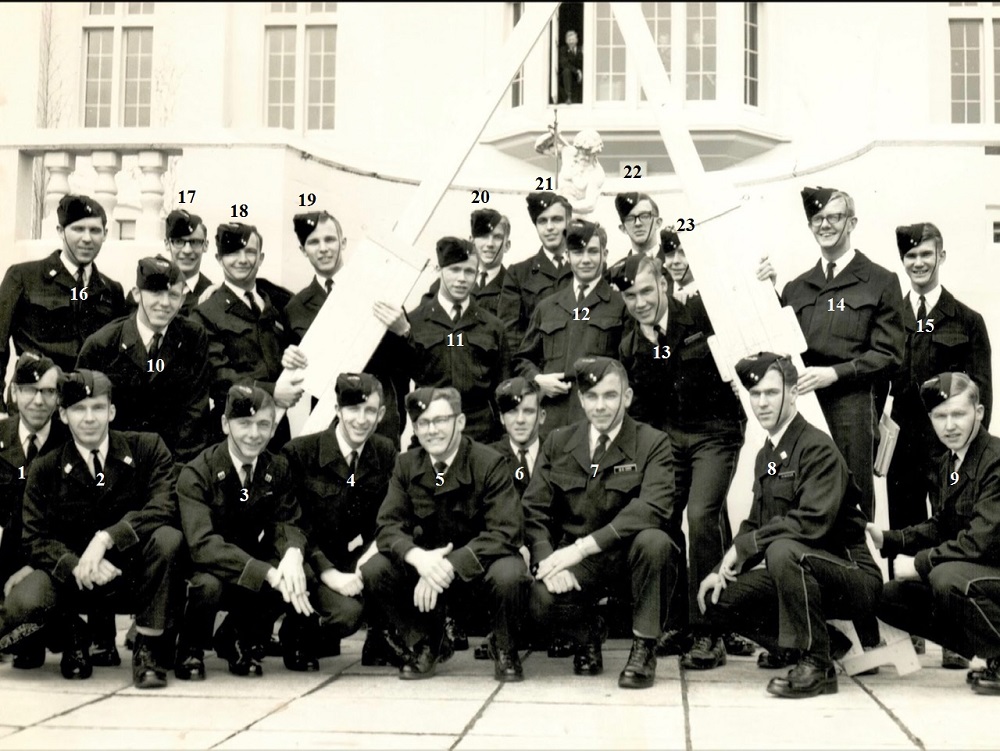|
HMCS ROYAL ROADS
ROYAL CANADIAN NAVAL COLLEGE
RCN-RCAF ROYAL ROADS
ROYAL ROADS MILITARY COLLEGE (Canadian Tri-Service College)
The educational history of the property began when the Government of Canada purchased Hatley Park in 1940. The ‘ship on land’ HMCS ROYAL ROADS was initially a training establishment for naval sub-lieutenants who received a truncated 90 day training course to meet the shortage of junior officers in the Canadian Navy. The training consisted of courses in signals, torpedo, gunnery, navigation, seamanship, and asdic. Asdic was an early form of sonar used to detect submarines and was a new addition to the skills of seamanship. In all, 600 sub-lieutenants were trained at HMCS ROYAL ROADS and went on to cope with the threat of submarines on the convoy routes of the North Atlantic and the Barents Sea.
In October of 1942, the shortage of officers in the Canadian Navy having been addressed, HMCS ROYAL ROADS was decommissioned and became the new Royal Canadian Naval College (commissioned 21 Oct 1942). The previous Royal Naval College of Canada, in Halifax, had closed in 1922. Captain J.M. Grant, who had been appointed in 1940 to HMCS ROYAL ROADS, continued as commandant. It was at this time that the Cadet (Grant) Block was built to accommodate the growing number of cadets. The stables and mews had been converted to 8 classrooms and a gunnery school. The parade ground, gym, and a larger boathouse were also added at this time. Homes for the commandant and dean of studies were also built on site, adjacent to the greenhouse.
In 1947, the Royal Canadian Air Force joined with the Naval College to create RCN-RCAF Royal Roads. After one year, the army joined, creating the tri-service Canadian Services College Royal Roads. Nixon Block was opened in 1955, and Millward Block in 1991, to accommodate the increased number of cadets. In 1967, as the Royal Roads Military College (RRMC), Royal Canadian Air Force and Navy officers were able to complete the first two years of university programs, and in 1977 the school offered a four-year degree program. Women weren’t eligible to attend the college until 1983. In February of 1994 the department of National Defense announced its decision to close RRMC with the final class graduating in 1995. (Source RRMC website)
Photo and Documents
HMCS ROYAL ROADS First Officer's Class 26 Jan - 26 Apr 1941 Click on the above photo to view a larger image
Click here to view the photo with officers numbered for identification
From the collection of Robert P. Brown, LCdr, RCN(R) Courtesy of Barbara Brown
Click here to view a copy of this photo - Courtesy of the Naval Museum of Halifax
HMCS ROYAL ROADS Third Officer's Class 02 Sep - 20 Dec 1941 Click on the above photo to view a larger image
Photo credit: CFB Esquimalt Naval and Military Museum - Catalog # 2001.805.002
Officer Graduates from HMCS ROYAL ROADS, Naval Officers' Training Centre Click on the above photo to view a larger image
Toronto Men Among Graduates From HMCS Royal Roads - 03 Oct 1942 1st row: J. Douglas, R.A. Nairn, G. Hadden, D.A. Parrot, R.J. Ingram and, R.W. Kent 2nd Row: C.R. Bond, N.I. Smith, E.D. Rushbrook, W.A. Smith, A.M. Hunter and , G.W. Dunn 3rd Row: E.B. Brace, W.R. Cook, W.D. McQuaig, W. Archer, J.J. Coates, E.W. Brockwell, G.E. Devlin and, R.L. Troke
Collingwood Division HMCS ROYAL ROADS
Credit: Royal Roads University Archives
Class of 1943 Royal Canadian Naval College Click on the above photo to view a larger image
Click here to view the photo with graduates numbered for identification
Credit: Royal Roads University Archives
Engineering Class - 1967 Royal Roads Military College Click on the above photo to view a larger image
Courtesy of William (Bill) Gard
|











